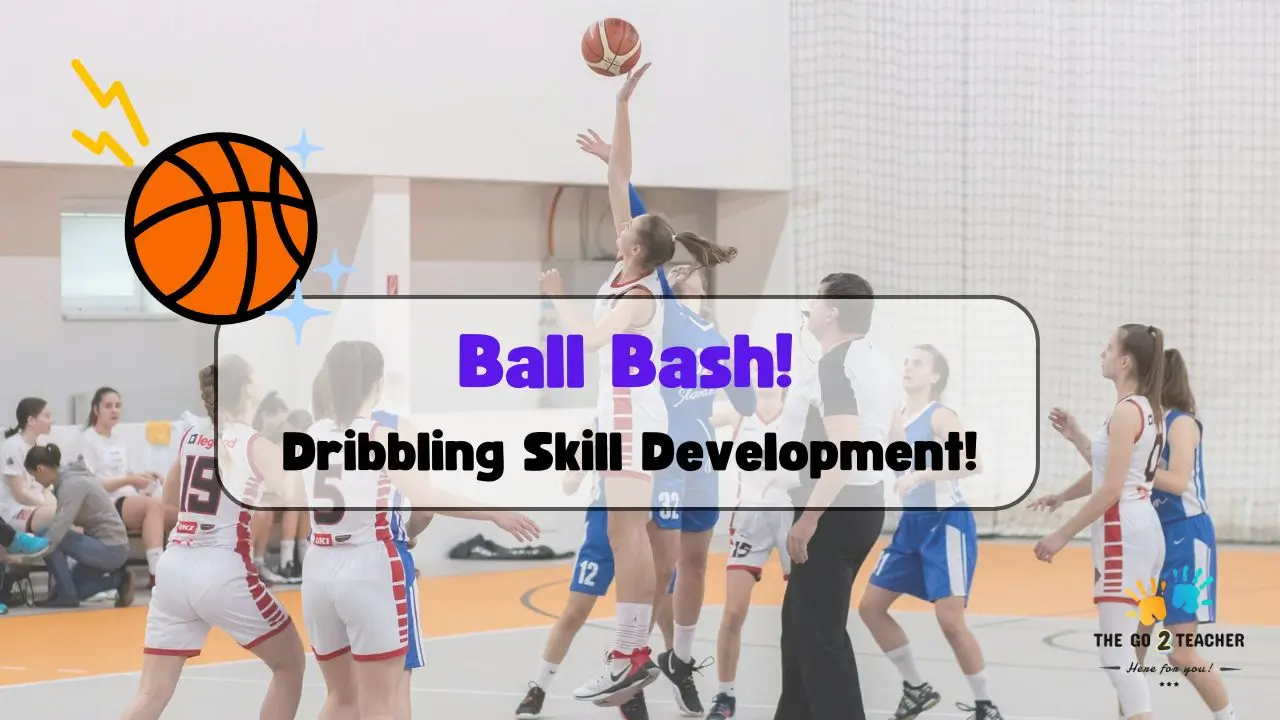Ball Bash | Developing Dribbling Skills with a game-based activity!
Jul 7, 2024


Kas
When we teach skills to students it is always far more beneficial to integrate those skills into a game-based activity. There are many reasons for this but here are a few as to why we always choose game-based skill development over skill and drill. Reason one, a game-based activity is far more engaging for students and allows them to develop the desired skills in a fun way which will encourage them to participate throughout the lesson. This is opposed to asking students to practice dribbling in isolation or on their own.
The second reason and the most important in my opinion is that game-based skill development translates better into a real game situation. Asking students to develop their skills with the pressures and constraints of space, other students, moving bodies, and people trying to steal your basketball and forcing students to move and dribble with intention is far more game-realistic than dribbling in isolation on your own. Students who are successful in this game with most likely be able to translate the learnt skills into a real game much more effectively.
This activity is a great example of how a minor game can be used to specifically develop skills to enhance students’ ability for a more sport-specific lesson at a later stage. Ball Bash will allow students to develop ball-handling skills which should translate effectively into sports such as basketball. This activity will also enhance hand-eye coordination and allow students to develop evasiveness and creativity in how they dribble and move away from defenders.

What Do You Need?
- Basketballs for each student
- Cones to mark a boundary
What Is The Goal Of The Game?
- To knock out your opponents from the field of play whilst not losing your basketball
- To dribble effectively whilst moving and dodging opponents
How Do You Play?
- Create a boundary on a court space- this can be as large or small as you want to make it, depending on the amount of students in the class. To start off I would suggest using a half of a basketball court for 20-28 students.
- Each student starts the game in a sport of their choice within the definer boundaries with a basketball
- When the whistle is blown, students have to dribble around the space and can not stand still, during this game students are to not stand still or hold the ball. The ball needs to be dribbled at all times. Students are free to move around the defined space but can not touch another player or their ball.
- Students can not go out of the boundaries or they are eliminated, if students touch another student during this time they are also out.
- At a random time the teacher will yell ‘Ball Bash!’- when this call is made the competition starts, students are to attempt to knock out any other students ball away from them and out of the boundary. If a student is able to do this to another student, the student who loses their ball is eliminated.
- Students can only touch the other players basketball and not touch them directly. Whilst students are attempting to knock away their opponents ball they have to keep dribbling and try not to have their ball knocked away.
- If a students ball is knocked away, they can try to regain it before it rolls out of the playing area.
- Eliminated students can either come back in after a set period of time when the teacher yells ‘Jail Break’ or it can be an elimination round where the game goes until one student is left!
- There are many ways to modify the game and adapt it to suit the needs of your class
- A teacher can yell ‘Ball Bash Cancel’ at any point for the game to return back to just moving and then at any point yell ‘Ball Bash’ again to resume the action!- this may be used to stager the intensity of the game and give students an opportunity to rest.

How Can You Modify It?
Make it easier!
- Make the space bigger
- Students get two chances
- Provide different size and types of balls
Make it Harder!
- Make the playing area smaller
- Elimination games- when your out you have to wait till the next round
- You can only dribble with a specific hand
What are the main skills being utilised?
Fundamental Movement Skills:
- Locomotor- run, jump, dodge, lunge, side step, leap
- Stability- turning, balance, stopping, bending, stretching
Tactical Skills:
- Scanning the field of play to make decisions
- Looking for gaps on the field to avoid being tagged
- Cooperative play, supporting teammates
- Following rules and structures of a game
- Critical thinking through decision-making
What Does The Evidence Say About Game Based Learning?
Enhanced Engagement and Motivation: Studies have shown that game-based learning significantly increases student motivation. For instance, a research study published in the “Journal of Educational Technology & Society” found that game-based learning can improve students’ intrinsic motivation by making learning more enjoyable and engaging .
Active Participation: Games often require active participation, which helps students stay focused and interested. This active engagement can lead to better retention of information compared to traditional learning methods where students might passively receive information.
**Contextual Learning and Application of Knowledge: **Games often simulate real-world scenarios where students can apply their knowledge in a practical context. According to a study in “Computers & Education,” students who learned through games showed better application of knowledge in real-world situations compared to those who learned through traditional methods
**Problem-Solving Skills: **Games frequently involve problem-solving tasks that require critical thinking and decision-making. These experiences can help students develop and practice these skills in a way that isolated drills cannot.
Collaborative Learning and Social Skills Development: Many educational games are designed for multiplayer or group settings, promoting collaboration and teamwork. Research from the “International Journal of Game-Based Learning” highlights that students who engage in game-based learning activities often exhibit improved social skills and teamwork abilities .
**Communication Skills: **Working together in games helps students develop communication skills as they must discuss strategies, share resources, and solve problems together. This collaborative environment mirrors real-life social and professional settings, preparing students for future interactions.
Sources:
- Journal of Educational Technology & Society: A study on the motivational effects of game-based learning.
- Computers & Education: Research on the effectiveness of game-based learning in applying knowledge to real-world situations.
- International Journal of Game-Based Learning: Analysis of the impact of game-based learning on collaboration and social skills.